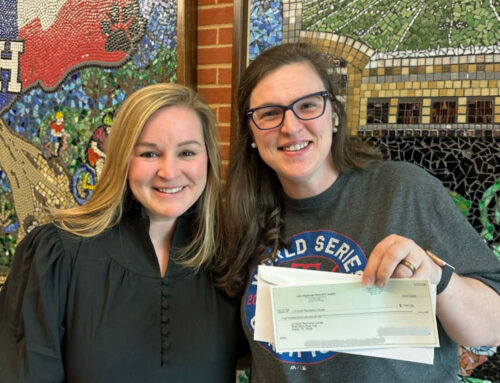In the late 1990s, Emily Mayerhoff decided she was tired of paying rent to her University Park landlord. But at the same time, she didn’t want to spend most of her time driving up and down Central Expressway to get to work, shopping and restaurants.
That’s when she found a 2,600-square-foot house in Merriman Park North and became a convert to Lake Highlands.
“What sold me was that it was as nice as so many other neighborhoods, without the expense of those other neighborhoods,” says Mayerhoff, whose family includes husband Rodney and a young daughter. “You get more house for your money, but it’s not an older house that you have to fix up.”
In this, Mayerhoff and her husband are part of a larger group, the 20- and 30-somethings who have discovered Lake Highlands and have helped to push home prices significantly higher during the past 10 years. And Realtors say this trend in home values could soar even more as Preston Hollow prices itself out of the market and more young families such as the Mayerhoffs look east of Central Expressway.
Say RE/MAX’s Gary Pilant: “Over the next 10 years, Lake Highlands is the next Preston Hollow. I’m sure of it.”
This raises all sorts of questions about the future of Lake Highlands, about its character and appeal, and even its reason for being. Can a neighborhood with $200,000 and $300,000 starter homes be the same kind of place it was when people needed a lot less money to live here?
Long-time residents say they hope so, because Lake Highlands is worth the effort.
By the numbers / Much of Lake Highlands has always been solidly middle class, but the bar has been raised considerably over the past 10 years. Consider these figures:
- Figures based on U.S. census data show that the number of households in the 75238 and 75243 ZIP codes with incomes higher than $100,000 doubled from 1990 to 2000. In 2000, one out of six households in 75238 and one of seven in 75243 earned that much.
- In 1990, according to census data, the median household income in 75238 was $37,512. In 2000, it was $51,126 – a 36 percent increase. The numbers for 75243 were $42,877, up from $30,723.
- The number of households earning less than $15,000 a year dropped by half in each area, to 7.0 and 8.4 percent.
- A 2,200-square-foot starter home, with 3 bedrooms and one bath, cost as little as $150,000 in the early 1990s. Today, that same house can cost as much as $250,000, depending on the neighborhood, according to figures compiled by the Lake Highlands Area Improvement Association.
There are many reasons for this growth, experts say. The slam-bang economy in the ’90s certainly helped. But, says John McIlwain, a senior fellow for housing at the Urban Land Institute in Washington, it may be as simple as supply and demand. After three decades of losing residents, more than a dozen U.S. cities, including Dallas, got some of them back, according to the 2000 census. But since inner city areas in places such as Dallas were already built out, there was little or no room to add housing. Hence, higher prices.
Everyone has a favorite story about the new, higher prices, be it the house down the street that went on the market after its owner died and sold for three times what everyone else paid for theirs, or the townhouses that keep going up on what little vacant land is available and that somehow sell in the mid-six figures when everyone believes they’re really worth a fraction of that.
The statistics bear those impressions out. Homes in Lake Highlands, according to the improvement association, sell for as much as $130 a square foot in the most popular neighborhoods around Merriman Park, White Rock and Moss Haven elementary schools. That’s up over a decade ago, but it’s not up by as much as other, comparable areas such as Lakewood, the Park Cities and Preston Hollow, where prices top out at $200 a square foot.
And that’s why real estate people figure there’s more room for prices to grow. The only thing that might slow the growth, they say, is if something drastic happens to the U.S. economy to reduce demand. So far, despite the slowdown, that hasn’t happened. Prices remain stable, and days on the market, a key measure of demand, ranges from 30 to 45. That’s a far cry from the 120 days of the early 1990s.
New residents / The people moving to Lake Highlands, McIlwain says, generally come from one of two groups. Either they’re Baby Boomers whose children have left home, or they are their children, the leading edge of the so-called Echo Boomers.
The latter group, in particular, has taken to Lake Highlands. They’re not only fed up with high rents in areas closer to downtown, but they also want more room. Henry Tackett, a 38-year-resident of the ABC streets, says he has noticed younger families on his block and in the neighborhood crime watch.
Why demand has increased has also been well documented. Crime, the scourge of the early ’90s, hasn’t returned. Meanwhile, the new residents are tired of long commutes, bored with suburban sameness, tempted by the Richardson schools, and attracted to urban amenities, nightlife, restaurants and White Rock Lake. Talk to Realtors, and they’ll say they hear the same comments from prospective buyers who didn’t know they could get Preston Hollow-like homes without Preston Hollow-like prices.
But what happens if prices move in the direction of Preston Hollow? Will Preston Hollow-like conflict follow, pitting long-time residents against the newcomers? Some of that has also occurred in parts of Lakewood and East Dallas, where new residents, who pay more money, sometimes have different expectations from their neighborhood. Teardowns – which so far haven’t been much of a factor in Lake Highlands – could further complicate the situation.
“I just don’t think we’re going to have the same kinds of problems they have had in Lakewood and Preston Hollow,” says Terri Woods, president of the improvement association. “We haven’t had teardowns yet, and we probably won’t have many. Our houses are big enough so there is enough square footage to rehab them.”
Perhaps. But the same thing could have been said about Preston Hollow, and especially about the area north of Royal Lane.
Paul Geisel, an urban affairs specialist who teaches at the University of Texas-Arlington, says one key to what happens in neighborhoods with rapidly escalating prices is whether new residents are attracted by the neighborhood or by the marketing. Do they want to live in an area because they like it, or because they’re supposed to like it?
Geisel points to the Park Cities as the ultimate example of what happens when marketing drives value. Twenty and 30 years ago, most residents saw Highland Park and University Park as communities, as places to raise a family that weren’t all that different from Lake Highlands. Today, the perception is far different, that of a suburb that exists for its schools, its high property values and its elitist appeal. But what else can be expected of a place with $500,000 starter homes?
“Clearly, there are social and cultural implications of these kinds of changes over the long term,” Geisel says. “They can affect the schools, the churches, all sorts of neighborhood institutions. If you have people moving in who aren’t interested in the neighborhood, what happens to the local schools and the local churches? There is no guarantee that anything will happen, but there is always the possibility, and I think that’s what worries so many people.”
But the flipside is that Lake Highlands has a ways to go before that happens.
“This is one of the best kept secrets in the Dallas area,” says Virginia Cook’s Peggy Hill, a long-time Lake Highlands Realtor. “We don’t have the premium here that you see on the other side of Central Expressway, or even below Northwest Highway. And I think one reason for that is our mindset. We know Lake Highlands is nice, but we don’t know that other people could think it’s nice, too.”
Adds Ebby Halliday’s Debbie Werner, who has lived here for more than 30 years: “You have to understand that a lot of people in Lake Highlands lived through price decreases in the 1980s, when they had to bring money to closings. So it’s nice to see the other end of it.”





